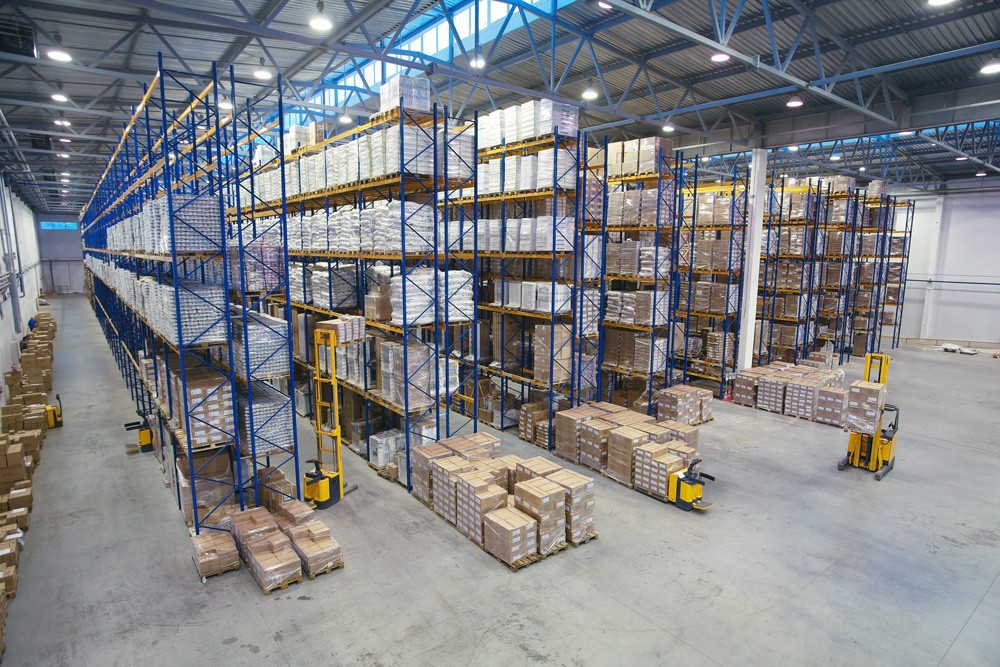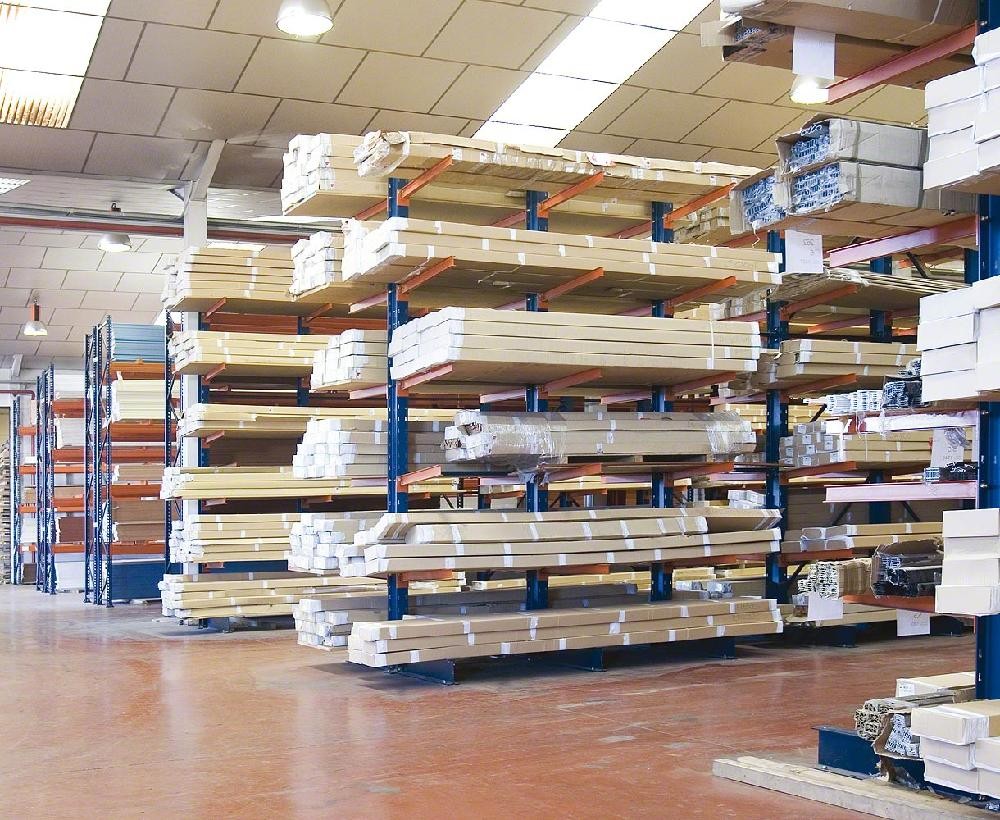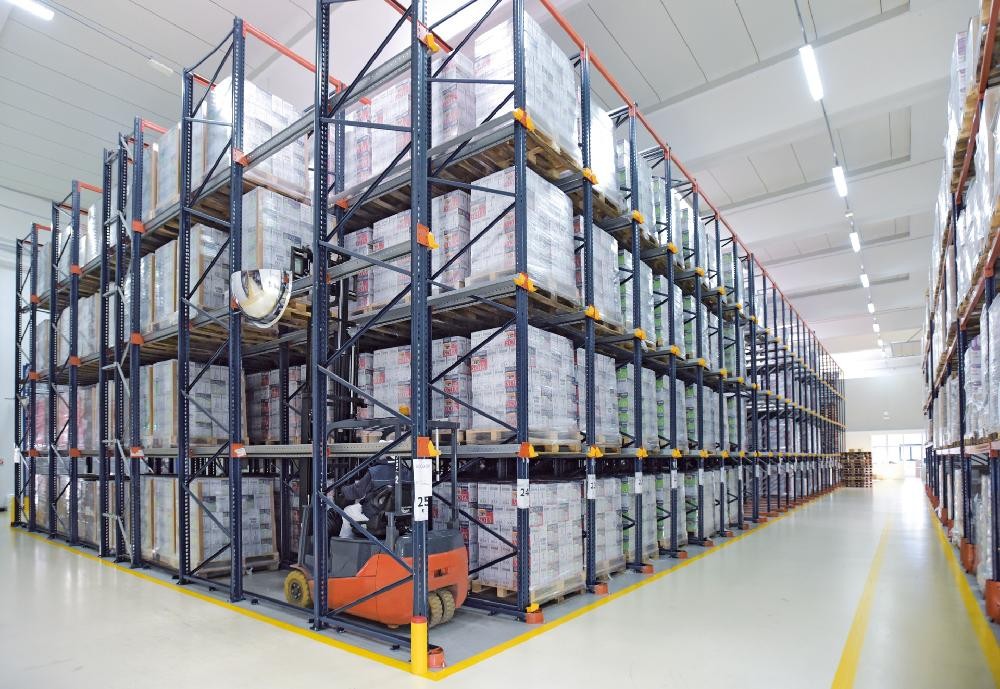Finding the Perfect Pallet Rack
Structuring your unique material handling or distribution center warehouse to perform at optimum efficiency and productivity isn't rocket science. There are formulas, however, that will help you take advantage of best practices and perfect warehouse design to boost your bottom line. One area that makes a huge difference in how efficiently a warehouse works is pallet racking. Do you understand all the variations of pallet racking out there? There's a pallet racking configuration on the market today that will help you address your specific application challenges. At Southwest Materials Handling, our experienced team can help you sort through all the options to find your best fit.
Pallet Racking Options
Pallet racking for material handling and distribution center warehouses can be simple or complex systems. Many companies start with pallet rack for their immediate need and then add on - or completely reconfigure - as the business grows and becomes more defined. Many material handling companies handle product that ebbs and flows with changing consumer tastes and standards. So, you may start off moving one kind of product through your warehouse and find that you're handling different types of product through the years. Others may specialize in one type of product and never change.
The good news is that most pallet racking systems are designed to be flexible and fairly simple to change up as the need arises. One thing is standard throughout, however, and that's the need to promote and maintain safety in your racking system. All racking systems should be anchored to the floor. It just makes sense to put employee safety first in all endeavors, but if you are investing in a racking system, you'll want to take steps to protect your racks and your product.
Pallet Racking Considerations
Installing or reconfiguring pallet rack systems in your material handling or DC warehouse calls for identifying several considerations before moving forward. Let's take a look at some of these:
- Flooring: Warehouse flooring comes in all types, like concrete or linoleum or more. Optimally, anchoring pallet racking to concrete is the best. Other considerations include the thickness of the floor and the floor's levelness. Floors that are not concrete - or that are concrete but aren't thick enough or are in areas of seismic activity - will need a professional engineer to make recommendations. Your flooring needs to be able to support the weight and PSI of your pallet racking system.
- Load Capacity: As we've discussed, product stored on pallet racking systems may change depending on your application, but deciding the load capacity for your pallet racking system should always be geared towards the heavy end. After all, you don't want to be in a position to have to change out your pallet racks because you underestimated the pallet weight you're asking them to bear. All the components of a racking system have an important part to play in determining load capacity and all parts need to work together.
- Measurement Specifications: Understanding what size pallet racking you need is a major step in deciding the best system for your DC or manufacturing operation. Again, you don't want to invest in a pallet racking system that won't meet your needs anymore than one in which space is wasted. So, it's important to take the right measurements to garner the optimum results. Those measurements consist of knowing the size and weight of your anticipated pallets, calculating the spacing necessary between load beams, measuring your vertical space for pallet rack frame height and choosing the right beam capacity for your application.
Taking these important steps before installing pallet racking makes sense financially - and more importantly - to promote safety in your operation. It can seem overwhelming, but rest assured that at Southwest Materials Handling we have experienced team members who can help you every step of the way.
Types of Pallet Racks
Once the initial steps are out of the way, you'll want to decide which type of pallet racking system is the best fit for your application. There is a wide variety of pallet rack systems for material handling and DC operations, but we'll take a look at some of the more popular. If none of these seems like a good fit, don't worry: At Southwest Materials Handling we can configure a custom solution for you. Here are five of the more popular systems:
- Selective Racking: Coming in as the most simple, basic pallet racking. Selective racking are beams that hold pallets and is designed for easy picking. Generally, you won't get much storage density with selective racking but you can design them for picking and placing on either side, giving you double the storage.
- Drive-In Racking: Just like the name says, drive-in racking is designed for forklifts to "drive in" and deposit or pick pallets sitting on rails in increment heights. Pallets are deposited to the back. This system offers a very high storage density, but it's hard to reach pallets in the back. It's best for a last in/first out (LIFO) warehouse system.
- Pushback Racking: Pushback racking allows pallets to be pushed back to the rear when new pallets are placed. Slightly inclined storage rails allow for easy movement of pallets. You'll get high density storage with this type of racking, and older product is in the back, while newer product is in the front. So, as with drive-in racking, pushback racking works best for LIFO situations.
- Gravity Flow Racking: If it's important for your product or materials to be moved in and out based on age, gravity flow racking is designed to move older product out first - or first in/first out (FIFO). Loaded from the back, gravity flow racks push older product to the front on an incline as new product is loaded from behind.
- Cantilever Racking: This type of racking is an example of pallet racking for a product or material that doesn't change in shape or size very often. For example, cantilever racking is the choice when storing items such as lumber or pipes.
As you can see, pallet rack systems come in a variety of shapes and sizes - just like product and goods moved through material handling and DC warehouses. A good pallet rack system that meets your needs is an investment with a positive ROI, as goods flow more freely, space is maximized, employees are more productive when product is easily found, picked and stored and they can be added to and expanded as the need arises.
At Southwest Materials Handling, we have the new - and used - pallet rack systems to boost your productivity, optimize your efficiency and integrate your systems for stellar order fulfillment. Contact us today to find out more.
When you subscribe to the blog, we will send you an e-mail when there are new updates on the site so you wouldn't miss them.




Comments 1
This is very good article.